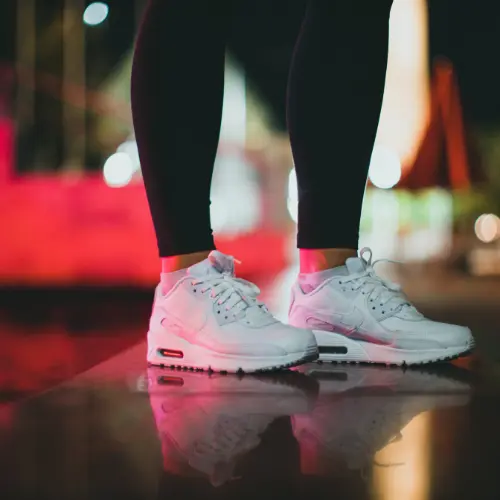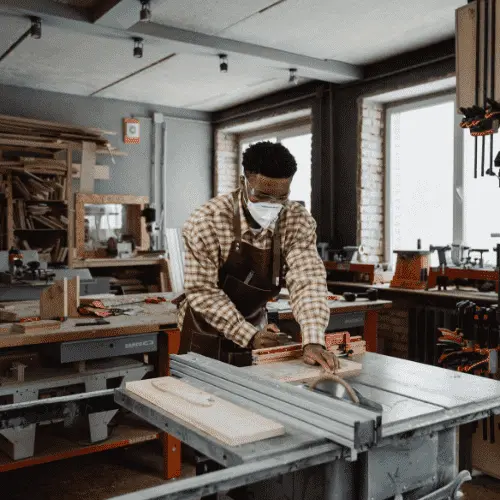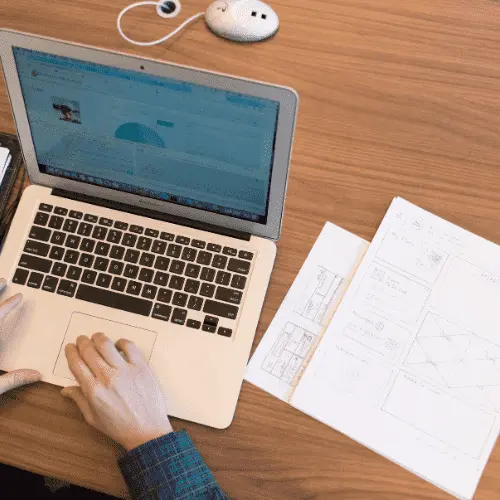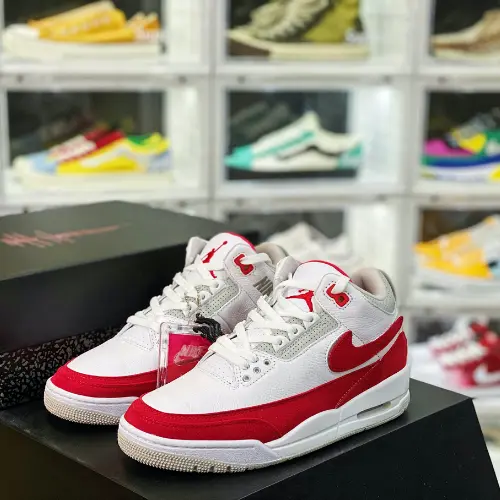
Shoes play a vital role in our wardrobe, yet it’s disheartening to witness a consistent increase in their prices. Over the span of a century, the average cost has reportedly surged from $20 to $206 for each pair of shoes.
Seeing this, I felt compelled to know why shoes are getting more expensive. After two weeks of dedicated research, I’ve uncovered a lot of different reasons.
In today’s article, I’m going to share all the reasons I’ve gathered to explain why shoes are so expensive right now!
Contents
- 1 Why Are Shoes So Expensive? Reasons Explained With Facts!
- 1.1 1. Promotions and Trends
- 1.2 2. A Rise in Raw Material Costs:
- 1.3 3. Handmade Vs. Machinemade Footwear
- 1.4 4. Innovative Technologies And Research
- 1.5 5. Brand Reputation And Legacy
- 1.6 6. Limited Editions And Collaborations With Celebrities
- 1.7 7. Demand Drives up the Prices:
- 1.8 8. Customized Footwear Gets Expensive
- 1.9 9. Sustainability
- 2 Final Words: Are Expensive Shoes Worth It?
- 3 Author
Why Are Shoes So Expensive? Reasons Explained With Facts!
1. Promotions and Trends

One of the primary reasons for the skyrocketing shoe prices is the excessive promotion of specific brands or styles.
Through posters, social media ads, and celebrity collaborations, brands generate hype for their upcoming shoe models. They promote their newer models as must-have trendy items.
The main purpose behind that is to set a trend, and once they set it, people gladly pay any amount for that trendy item, enjoying the bragging rights and attention that come with it.
What I mean to say is that promotion is a powerful marketing tool—it makes a product’s high cost justifiable to buyers. People will pay whatever the brand asks for just to be part of the trend. That’s why shoes are so expensive!
Don’t mind me, but it is a pretty sick psychological trap! And brands are using it not just for shoes but for phones, jackets, cars, and many other products as well.
2. A Rise in Raw Material Costs:

Another significant factor I’ve identified is the increase in the cost of raw materials. It occurs for two reasons: a disruption in the supply chain or inflation.
For the most part, the cost of materials like leather, rubber, and synthetic materials goes up due to such disruption in the supply chain. This shortage is caused by many means like natural disasters, geopolitical events, global pandemics, environmental concerns, and economic instability.
Disruptions often lead to shortages, which can vary in duration, ranging from a brief period to an extended one. In these shortages, high-quality leather gets super expensive, and to overcome any losses, brands have to increase the prices of their leather products.
Next is inflation, which is the general increase in prices over time and can also contribute to the rising cost of raw materials. When the overall price levels in an economy increase, it affects the prices of goods and services, including raw materials
So, both of these might sound the same somehow, but they are different and can bring about a change in the prices of the raw materials.
3. Handmade Vs. Machinemade Footwear
Next up, we have handmade and machine-made footwear. Now, this is going to be an interesting one. Let’s check them one by one and see how they are influencing the prices.
First, let’s take machines. Machine-made products are usually less expensive because machines handle everything from cutting to stitching, reducing the need for human labor. By doing this, companies not only reduce costs but also make production faster and easier. Machine-made shoes lack signature craftsmanship and don’t exude the premium feel or absolute comfort often associated with handcrafted items.
Handmade shoes, however, cost more, but they include experts who craft each pair by hand. The expertise invested in handmade shoes translates into exceptional comfort, meticulous detailing, and a unique and enjoyable buying experience for customers.
Handmade shoes are excellent, but they come with an additional cost of labor. Labor wages vary from place to place; for instance, in China, it’s around a dollar per hour, while in the US, it’s around $7.25 per hour. Labor costs significantly add to the overall production expenses.
For short, the handmade products get expensive because the experience here is premium.
Also Check: Why Are Munro Shoes So Expensive?
4. Innovative Technologies And Research

Nowadays, using innovative technologies in shoes is a big trend. All these technologies are made with one goal in mind: to give you the most comfort when you’re on your feet.
The integration of technologies isn’t random; there’s a significant research process behind it. Before incorporating any technology, extensive research is conducted to assess its benefits and drawbacks. So every technology has a specific reason it’s used.
Now, let’s mention a few technologies that we have in common.
One common thing I notice is the aerodynamic design of shoes. It helps runners feel comfortable and perform at their best. Similarly, there are removable, lightweight footbeds that don’t add extra weight for runners.
Other’s can be advanced cushioning systems, which give you a sense of cushioning inside the shoe, making it feel like your foot is on a cloud. With that, you also see air technologies that bring airflow inside the shoe and keep your feet fresh all the time.
With these, some other newer technologies are now influencing the market.
Anti-fatigue technologies help you reduce the impact of prolonged standing or walking, providing additional support and comfort for the wearer.
For a responsive and springy feel, there’s Energy Return technology in athletic footwear. It helps you push off the ground more easily. The energy return in each step helps in forward propulsion. In the absence of it, you will find that your movements are not as efficient.
Running shoes nowadays are incorporating advanced 3D printing technology, especially in the creation of midsoles. Major players in the shoe industry, including Nike, Adidas, New Balance, and Under Armour, have adopted additive manufacturing to produce such sneakers.
Keep in mind that integration of such technologies takes time and money. That’s another reason why shoes are so expensive.
Also Check: Why Are Paul Green Shoes So Expensive?
5. Brand Reputation And Legacy
Brand names have an impact on prices. The bigger the brand, the higher the cost you’re likely to pay. Here’s an example of what I mean.
If a pair of sneakers comes from Adidas, Reebok, or Gucci, it’s going to cost more than those that come from less popular brands, like Spalwart, Merman, or Solovair.
The same goes for women’s fashion; it’s said there are heels called Bellarose
by Christian Louboutin that cost exactly $3,895. Now, this raises another fairly related question: Why are bigger brands expensive?
Look, big brands are often established, and they have proven to customers the trustworthiness of their products over time. Their name becomes a symbol of reliability, and that’s why they can command extra money for their products.
Newer brands lack this reliability factor; they are in a testing phase with customers. So, if you’re seeking more affordable footwear, try exploring newer or less popular brands. These brands often sell their products at a lower cost. They prioritize reaching sales targets, even if it means making less profit on each item. Their emphasis is on building a loyal customer base and appealing to a broader range of shoppers, including those with budget considerations.
So, it’s true that big brands, apart from being good, sell their name.
6. Limited Editions And Collaborations With Celebrities

People are crazy about their favorite celebrities, and brands know it. They team up with these stars, create special editions with their names, and sell them at a premium price. It’s a smart move because fans love to follow in their idols’ footsteps, and these limited editions have become a hot commodity, fetching higher prices.
They often release these special editions for a short time, creating a sense of scarcity that fans go crazy for. Even if the designers aren’t super famous, the limited availability makes the shoes more valuable and, in turn, more expensive. It’s a very clever trick that we see very often for many expensive shoes.
Some popular collabs that are coming to my mind right now are Cardi B x Reebok collab, Kendrick Lamar x Nike Cortez, and Big Sean x Puma.
It’s not always about celebrities; sometimes, it’s about bringing two iconic brands together. Two famous brands team up to make special shoes, like Nike Air Jordan 1 or Adidas x Gucci. These special shoes become collectibles, often reselling for thousands of dollars.
No matter whether it’s a celebrity or a brand collaboration, shoes are expensive in such cases.
Also Check: Why Are Clark Shoes So Expensive?
7. Demand Drives up the Prices:
This factor totally brings me back to my economics class! This factor explains to you a very famous economic strategy, which is that demand sets prices.
Imagine any hot sneakers that everyone wants. If there aren’t many and lots of people want them, the price goes up. It’s like a rule: when something is super popular but there’s not enough, the price gets higher. It’s just how supply and demand work, especially for trendy things!
So, if you’ve heard about the law of supply and demand, this is it in action. People who want something, especially those with money or who are into collecting, might not mind paying extra when things are hard to get.
Also Check: Why Are Vans Shoe So Expensive?
8. Customized Footwear Gets Expensive
When you want shoes made just for you, it can cost more. This is because you get to choose everything, like the material, style, and size. While these custom shoes are perfect for your preferences, they end up being more expensive because the company has to cover the extra costs of making something unique.
So, if you want shoes that are exactly what you like, be ready to pay a bit more!
9. Sustainability
Shoes made sustainably and ethically are in increasing demand, but they can be more expensive to manufacture.
Nowadays, popular brands promote eco-friendly fashion with their shoes, which is great, but they charge more for that. Think about it—they’re all in for using these sustainability materials like organic cotton, recycled polyester, and leather alternatives that won’t have Mother Nature cringing. Also, they are committed to fair labor practices, ensuring workers receive fair wages and operate in safe conditions.
Aside from these, many states have different regulations about waste products that these factories have to follow. And working on these regulations and properly disposing of waste products needs special investment.
In the end, the fact is that you are the one paying for all of these.
Final Words: Are Expensive Shoes Worth It?
Yes! Buying expensive shoes is a wise choice for style and foot health. Personally, I’ve found it pleasant too. I often wear them outdoors, even for casual walks, and it’s always an enjoyable and comfortable experience.
So, putting money into popular brands like Nike, Blundstone Munro, Red Wing, or Clark is not a bad decision; they’re famous for top-notch quality and design.
These brands endure because they don’t compromise on quality, which is a nice thing for many shoppers. So, that is all about it. Let me know what you think of my reasons.




